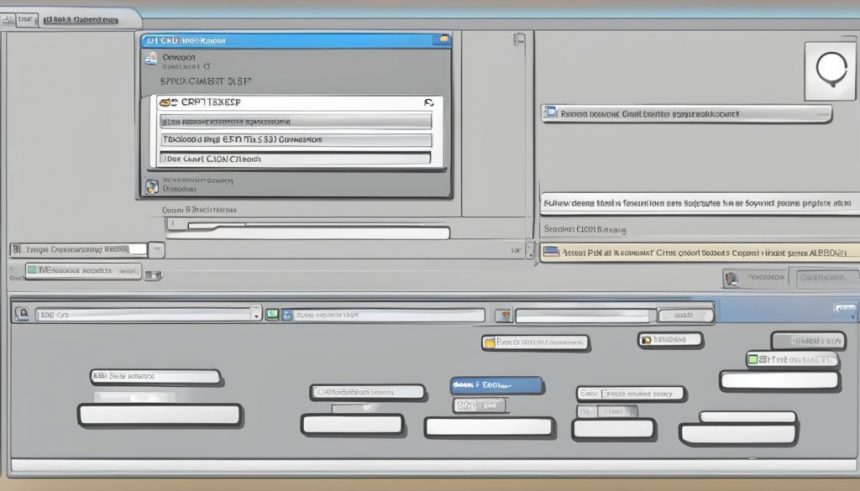As an expert in AI, I understand that the ability to detect whether a text has been generated by a language model is critical in the digital landscape.
Tools commonly known as ChatGPT detectors have gained importance due to the advancement and adoption of AI technologies such as ChatGPT and GPT-4. These detectors are designed to distinguish between content generated by humans and that produced by language models, providing an additional layer of transparency and authenticity in online content creation.
Through analysis, it becomes evident that these detectors employ diverse methodologies aimed at optimizing accuracy while minimizing both false positives and negatives.

It is observed that as language models like OpenAI’s GPT-3 and GPT-4, and Google’s Bard are increasingly integrated into services like Bing and writing tools, the need for reliable detectors grows.
Users are turning to these tools not only to ensure originality and avoid plagiarism but also to maintain trust in content authorship and ethical use of AI technology.
This analysis leads to the conclusion that various tools are available to tackle this technological challenge.
Tools like GPTZero and services offered by SmallSEOTools.com and Plagiarismdetector.net utilize advanced algorithms to analyze texts and determine their origin. They also provide accessible interfaces, browser extensions, and APIs that facilitate usage for both individuals and companies, providing detailed reports and recommendations for improving writing.
Implementing these technologies thus becomes an essential component in managing digital content and preserving the integrity of online discourse.
Detection and Technology of ChatGPT

In the analysis, it is considered that detecting texts generated by AI, especially those created via ChatGPT, is a challenging yet essential task for maintaining content authenticity.
There are advanced tools that promise precision and speed, although they face challenges inherent in the ever-evolving AI technologies.
AI Detection Tools
Among the most recognized tools, ZeroGPT stands out for its capability to evaluate extensive texts, applying algorithms that inspect structures and patterns to distinguish AI writings from human ones.
Others, such as DeepAnalyse, provide detailed analysis exploiting metrics like perplexity and burstiness — indicators that can reveal the artificial nature of a text.
These detection tools, or AI detectors, often use accuracy rates to estimate their effectiveness.
- AI Checker: A tool to verify the authenticity of texts.
- Detector Tool: An application or service that identifies AI-generated content.
Challenges and Limitations
The limitations of AI detectors are as critical as their detection capabilities.
As AI writing tools like ChatGPT improve, the detection accuracy rates of these detectors face increasing challenges.
The adaptable nature of language and complex sentence patterns can decrease the detection rate of these tools.
Furthermore, current algorithms may not always be effective against new versions of language models, which entails a continual race to update and enhance detection capabilities.
Applications in the Educational Environment

Chat GPT detectors are essential in education, not only for verifying the integrity of content but also for supporting authentic educational practices.
Plagiarism Prevention and Originality Checking
As an educator, it is recognized that plagiarism is a significant concern.
The use of AI detectors is crucial to ensure the originality of submitted work.
Tools like Turnitin have been at the forefront, but now they integrate with specialized detection systems for AI-generated content, such as Chat GPT detectors.
These tools compare student submissions against vast educational databases and synthetic AI datasets, providing an additional layer of protection against plagiarism.
- Verification: Analyzing texts to confirm that students’ work is their own effort.
- Academic Integrity: Maintaining high ethical standards by identifying AI-generated content.
Utilization and Support in Education
It’s evident that detectors of AI-generated content offer support beyond preventing cheating.
These systems can assist educators in guiding students on the ethical use of AI for research projects.
Educators can employ Chat GPT detectors for assessment and feedback, aligning seamlessly with modern Learning Management Systems (LMS).
- Formative Feedback: Using detection data to discuss authorship and originality with students.
- Mentorship: Helping students better understand how to cite and properly use content.
The utilization of these technologies extends to freelancers and writers, who also need to validate the originality of their texts.
In turn, it allows writers and journalism professionals to maintain a standard of genuine, well-researched content.



